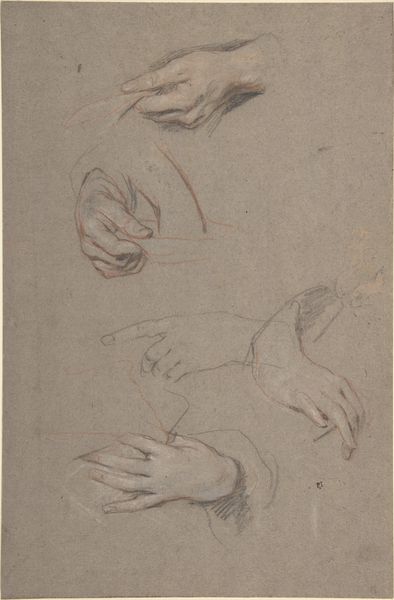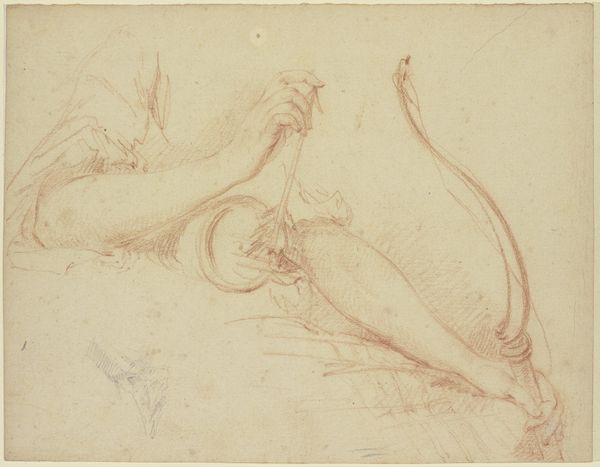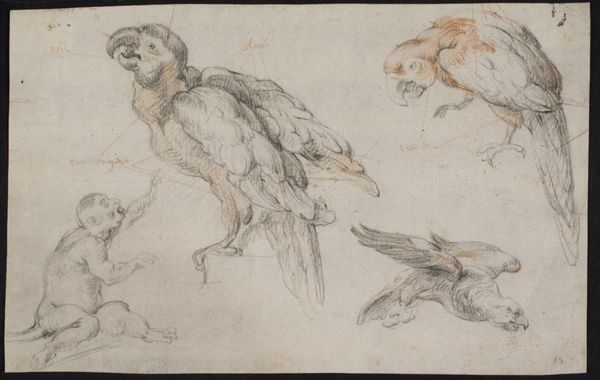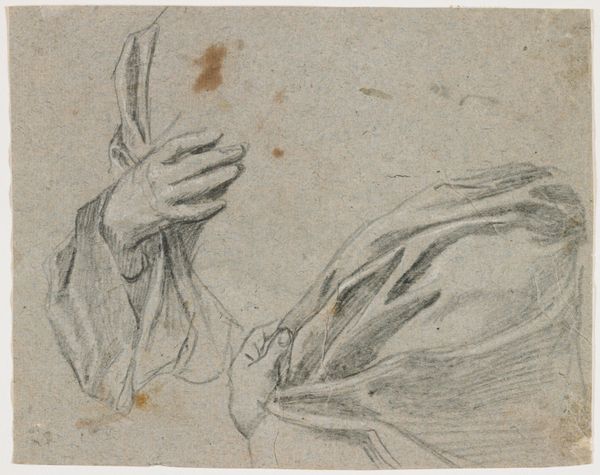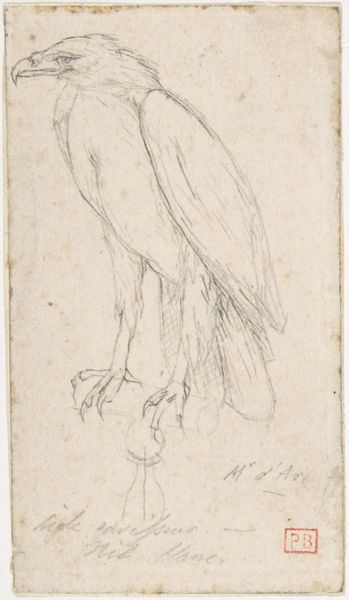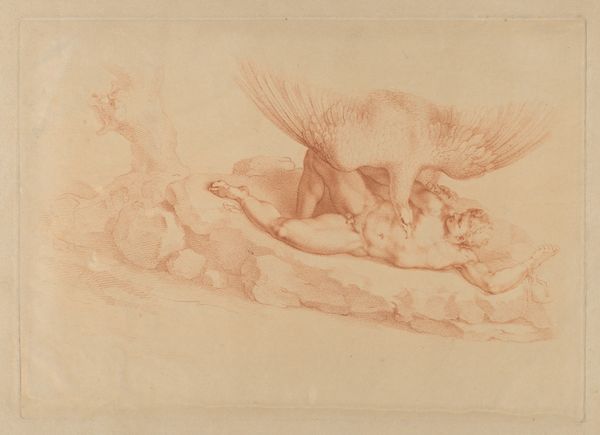
Study for an eagle’s head, three studies for a hand with a quill, and one study for a hand holding a book 1625 - 1715
0:00
0:00
drawing, pencil
#
portrait
#
drawing
#
pencil sketch
#
charcoal drawing
#
pencil drawing
#
pencil
#
portrait drawing
#
academic-art
Dimensions: 213 mm (height) x 230 mm (width) (bladmaal)
Curator: We're looking at "Study for an eagle’s head, three studies for a hand with a quill, and one study for a hand holding a book" by Carlo Maratti. It dates to somewhere between 1625 and 1715. Editor: My first impression is how meticulously rendered these hands are! The textures and delicate articulations almost suggest life. They feel both powerful and ephemeral. Curator: Indeed. As an academic exercise, this drawing encapsulates a very specific aspect of artistic training in the 17th and 18th centuries. Maratti’s drawing reflects the power of academic art. A focus on precise anatomical study allowed an artist to tackle allegorical subjects. Editor: That's right, the eagle, often connected with gods like Zeus, speaks to power and divine authority. In Christian iconography it represents the Gospel of John. Considering the hands with quills and a book, the piece may be about the transmission of knowledge. Curator: Absolutely, the depiction is of intellectual authority through the control of knowledge and artistic skill. Notice the eagle head is a sketch. Maratti may be highlighting the creative process of forming knowledge. These images have the role of upholding the social standing of an educated elite. Editor: Also, hands holding the writing instruments link the power and knowledge embodied by the eagle to the active process of creation, of making art. One thinks of illuminated manuscripts with eagle symbols. It speaks to lasting authority and knowledge that echoes through generations. Curator: And within an academy like that of Rome, this becomes a political issue in controlling imagery to align with the goals of powerful people and institutions, and that gets replicated throughout Europe. Editor: What fascinates me is the persistence of these symbols through shifting cultural landscapes. We see eagles on contemporary national emblems and institutions, maintaining a connection to classical ideas of power and governance. Curator: Right, and it speaks to how the image retains the imprint of its institutional use in academies. This work embodies not just an aesthetic ideal, but also a system for perpetuating a visual vocabulary for representing power and authority. Editor: Examining this drawing allows us a glimpse into the evolution of potent and meaningful visual language. Curator: It reminds us how artists navigated political contexts to preserve their images in the public sphere.
Comments
No comments
Be the first to comment and join the conversation on the ultimate creative platform.




